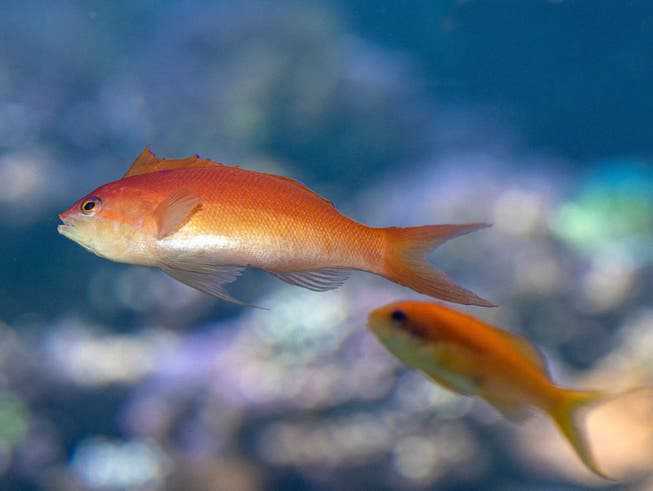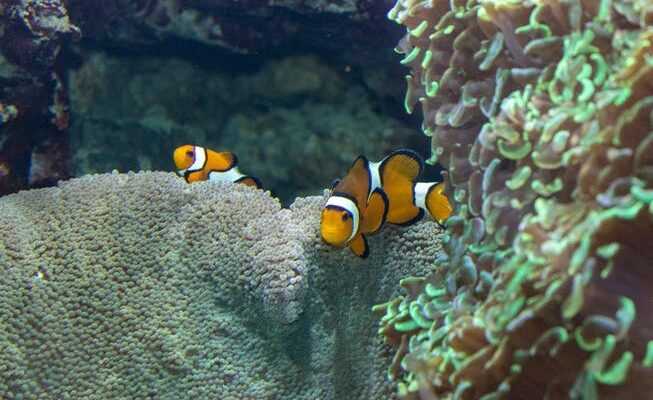There is hardly anything in the animal kingdom that does not exist. Some species, for example, can change sex over the course of their lives—sometimes multiple times. But what exactly does that bring them?
The clown anemonefish also knows how to change its sex.
Since the beginning of this year, every person in this country has been able to freely choose their gender: they only have to submit their wish to the civil registry office and the official change will take place.
This innovation, which is based on a change in the Civil Code, is the subject of lively debate, but the fish only smile mutely and wearily: Various of their species have been practicing sex change for millions of years, and in a very concrete way.
Nature takes care of it
And since Zurich Zoo likes to reflect contemporary topics in its media aperitif from time to time, this edition takes place on Wednesday in front of the aquarium, whose population is modeled on an Indo-Pacific coral reef. The fish here have cute names like fox face and goby, in the background a sea surf is shown over loudspeakers, and the zoo curator Pascal Marty skilfully avoids one or the other blunder on the subject “When animals change sex”.
It is not about the perceived belonging and questions of identity, as he makes clear, but solely about the question of biological sex. In mammals, this is generally determined by the chromosomes, i.e. genetically determined. For many tortoises and crocodiles, however, it is determined by the breeding temperature of the young animals, which should be common knowledge.
The fact that snails exist as hybrid creatures is also widely known. Less likely, however, is the ability of some fish species to change their sex in adulthood. “Sequential hermaphroditism” is the charming term that man has devised for this phenomenon.
The transformation can work both ways, sometimes even several times in the course of a fish’s life, and of course does not take place on the operating table. Nature takes matters into its own hands: According to Marty, the animals in question can change their behavior and anatomy accordingly within a few weeks or even days. Numerous species of bony fish use this route to create the opportunity to reproduce throughout their adult life: sperm or eggs, that is the question. Most of the time it’s all about enlarging or reducing one’s own shape, depending on what appears to be expedient for species conservation under the given living conditions and communities.
In the case of the anthias, for example, “big” is considered “beautiful”: Large, dominant and aggressive males claim the territories, while smaller ones look to the moon during reproduction. So it is an advantage to be a female first and to be able to mate with the dominant male. Later, a metamorphosis towards the masculine is recommended. The largest female in the group makes this switch anyway and thus rises to become the leader when the dominant male has died.

From female to male: Flame Anthias change sex after mating.
The truth about Nemo
In the case of clownfish, which became a favorite plush companion in children’s rooms thanks to the animated film “Finding Nemo” (2003), the situation is reversed: they are born as males, whose body size has little influence on reproductive success. However, some of these later switch to the females, who are always the largest member of the group. The second largest is the only mating male – who slips into the role of the female after she dies.
Strictly speaking, Nemo’s film father should therefore biologically mutate into his mother after she was devoured by a barracuda. But this turn would probably have become a bit confusing for a very young cinema audience. Perhaps the next generation would then be better prepared – after all, gender issues are so complex and present in today’s society in ways that could hardly have been imagined ten years ago. In addition to the decision between male and female identity, all conceivable mixed and intermediate forms are under discussion, so that one soon loses the overview and perspective, not only when choosing the right toilet door.
But the variety of variants in the animal kingdom is far from being dealt with conclusively here. Those who like something a little more special than the clown fish will find what they are looking for among the coral gobies. Both males and females can switch sexes, which has a very practical reason: With this sedentary species, the choice of potential partners is very small. If two specimens now meet and decide to swim through life together, they can form a heterosexual couple in any case.
